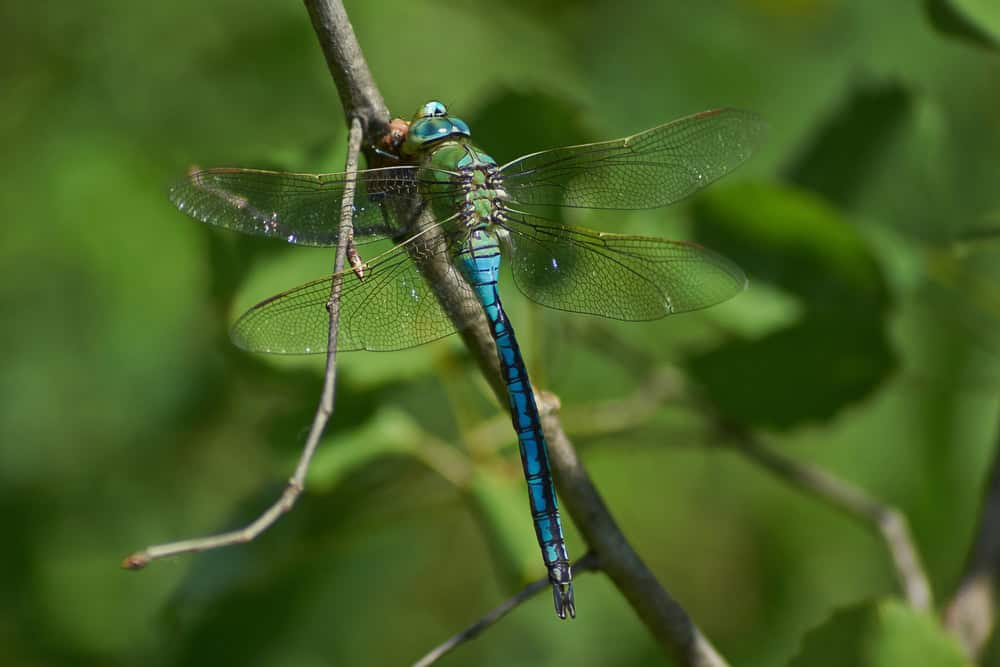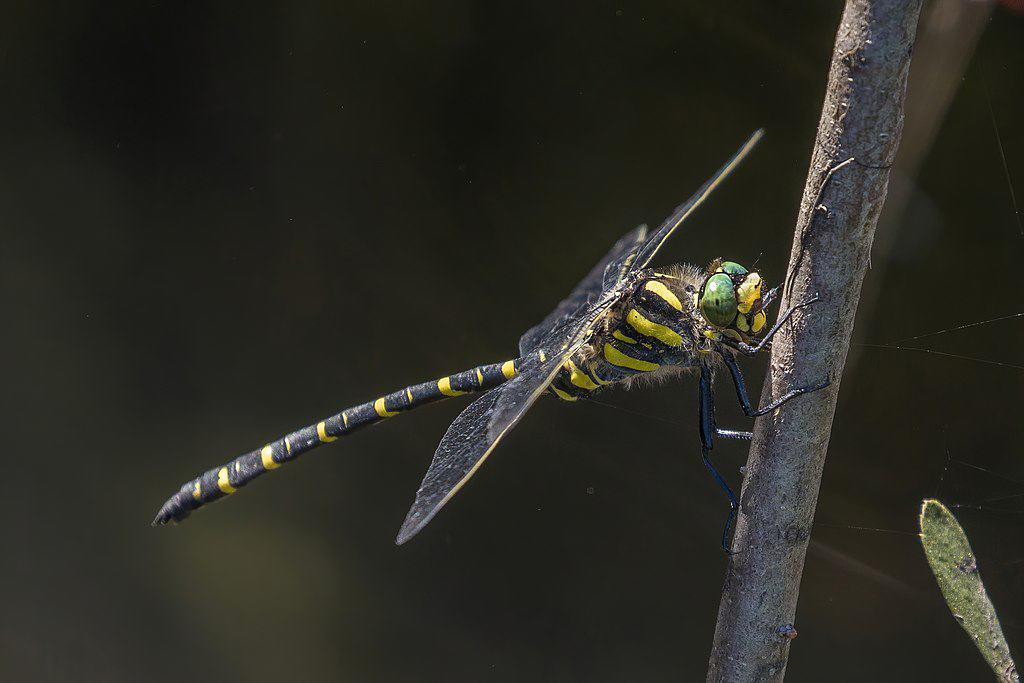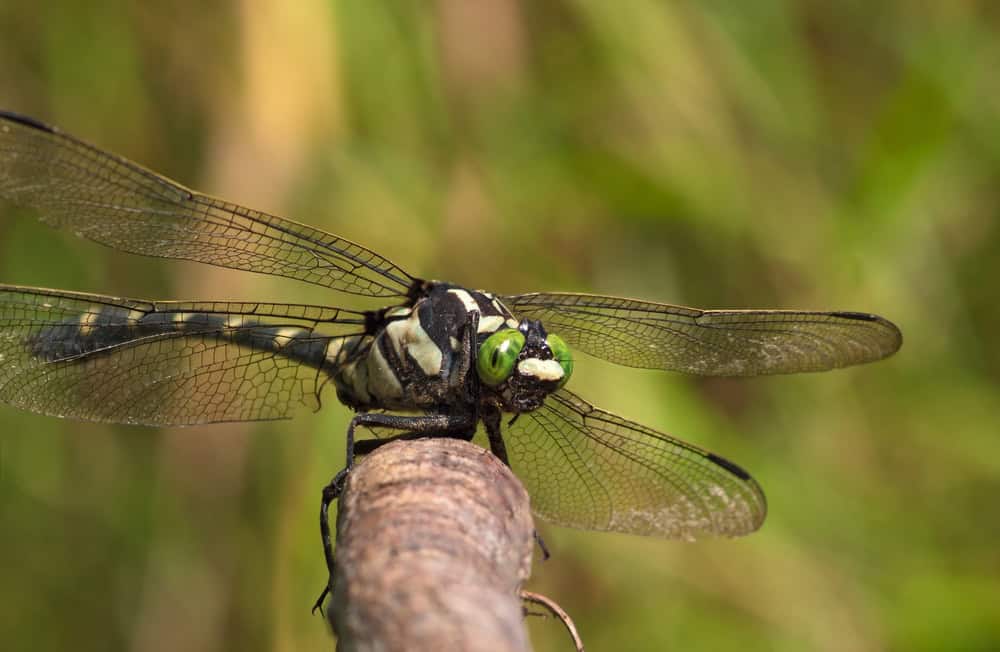In the vast world of predators, from lions prowling the savannah to sharks patrolling ocean depths, one unlikely champion reigns supreme in hunting efficiency. Dragonflies—those colorful, delicate-looking insects with transparent wings that hover near ponds and streams—are actually nature’s most successful hunters, with a prey capture rate that outstrips all other predators. These aerial assassins have perfected the art of hunting through 300 million years of evolutionary refinement, developing remarkable adaptations that make them lethal to their prey but fascinating to human observers. Their hunting prowess is so exceptional that it has inspired technologies ranging from drone designs to advanced optical systems. Let’s explore what makes these ancient insects the deadliest hunters on Earth.
The Astonishing Hunting Success Rate

Dragonflies boast an almost unbelievable 95% success rate when hunting prey, a statistic that eclipses all other known predators in the animal kingdom. To put this in perspective, great white sharks successfully capture prey roughly 50% of the time, lions about 25%, and even the striking efficiency of cheetahs only reaches approximately 58%. This remarkable success rate isn’t merely impressive—it’s evolutionary perfection, developed over hundreds of millions of years. Dragonflies rarely miss their target, whether hunting mosquitoes, midges, flies, or other small insects. Unlike many predators that rely on multiple attempts to secure a meal, dragonflies typically need just one precise interception to capture their prey, making them the undisputed champions of hunting efficiency in the natural world.
Extraordinary Vision Systems

The foundation of the dragonfly’s hunting success lies in its remarkable vision. These insects possess compound eyes that contain up to 30,000 individual facets or ommatidia, giving them nearly 360-degree vision. Each ommatidium functions as a separate light detector, creating a mosaic-like image that excels at detecting movement. Most impressive is the dragonfly’s ability to process visual information at an astonishing rate—their brains can process up to 200 distinct images per second, compared to the human capacity of about 60 images. This means dragonflies perceive the world in what amounts to slow motion, allowing them to track fast-moving prey with unprecedented precision. Their eyes also contain specialized zones for enhanced color perception and polarized light detection, enabling them to spot prey against complex backgrounds and even detect the glint of insect wings in flight.
Neurological Precision and Predictive Targeting

What truly sets dragonflies apart is their remarkable neurological system dedicated to hunting. Scientists have identified specialized neurons that connect directly from the dragonfly’s eyes to its flight muscles, creating one of the fastest sensory-to-motor responses in the animal kingdom. This neural shortcut allows the dragonfly to react to prey movements in under 50 milliseconds. Even more impressive is their ability to employ predictive targeting—dragonflies don’t simply chase their prey but calculate where it will be, adjusting their flight path accordingly. This computational ability, achieved with a relatively simple nervous system, allows the dragonfly to intercept prey by solving complex trajectory problems that would challenge advanced computers. The dragonfly’s brain essentially creates a real-time simulation of its prey’s future position, enabling it to execute precise aerial maneuvers that anticipate rather than react to prey movement.
Aerial Acrobatics and Flight Capabilities

Dragonflies possess perhaps the most sophisticated flight mechanism in the insect world, featuring two pairs of independently controllable wings that can beat in phase, out of phase, or in complex patterns. This unique design allows them to hover perfectly still, fly backward, make hairpin turns, and accelerate from zero to 30 mph in mere seconds. The ability to control each wing independently gives dragonflies unparalleled maneuverability, enabling them to change direction instantaneously—a critical advantage when pursuing evasive prey. Their wings operate at frequencies between 30 and 50 beats per second, creating sufficient lift regardless of airspeed. Perhaps most impressively, dragonflies can remain airborne for extended periods, with some species flying continuously for hours while hunting, covering miles of territory. Their energy-efficient flight systems have evolved to maximize hunting success while minimizing energy expenditure, making them not just effective hunters but sustainable ones.
Deadly Feeding Apparatus

Once a dragonfly intercepts its prey, its specialized feeding apparatus ensures capture is virtually guaranteed. Dragonflies possess modified leg structures that form a basket-like “capture zone” beneath their heads. These spiny legs aren’t used primarily for walking but have evolved specifically for snatching prey from the air. When extended forward during hunting flights, these legs create an inescapable trap that can snare insects in milliseconds. After capture, the dragonfly’s powerful mandibles—which contain sharp cutting surfaces—quickly dismember prey, often beginning consumption while still in flight. Their mouthparts can crush through the exoskeletons of other insects with ease, and some larger dragonfly species can even capture and consume small vertebrates like tadpoles or tiny fish. This efficient feeding system allows dragonflies to process prey rapidly, enabling them to continue hunting almost continuously during daylight hours.
Voracious Appetite and Hunting Capacity

The hunting efficiency of dragonflies is matched by their remarkable appetite and consumption capacity. A single adult dragonfly can consume hundreds of mosquitoes and other small insects daily, with some estimates suggesting they capture one insect every two minutes during peak hunting periods. Their metabolic demands are substantial, requiring this constant food intake to fuel their high-energy flight and reproductive activities. During their adult lifespan, which typically lasts several weeks to a few months, a dragonfly might consume thousands of insects, making them significant controllers of pest populations. This insatiable appetite continues throughout their adult lives, with females often hunting even while mating or laying eggs. Their hunting drive is so powerful that larger dragonfly species occasionally capture smaller dragonfly species, demonstrating their opportunistic approach to predation.
Underwater Predators: The Nymph Stage

Before transforming into aerial hunters, dragonflies spend the majority of their lives—from months to years depending on the species—as aquatic nymphs that are equally formidable predators in freshwater ecosystems. These nymphs possess one of the animal kingdom’s most remarkable hunting adaptations: a hydraulic extendable lower lip called a labium that can shoot forward at incredible speeds to capture prey. This specialized mouthpart functions like a spring-loaded arm that can extend up to one-third of the nymph’s body length in just milliseconds. Dragonfly nymphs prey on anything they can capture, including other aquatic insects, small fish, tadpoles, and even smaller members of their own species. Their success as underwater hunters is so significant that studies have shown dragonfly nymphs can reshape entire pond ecosystems through their predatory impact, controlling populations of mosquito larvae and other aquatic organisms.
Evolutionary Perfection Through Time

Dragonflies represent one of evolution’s most enduring success stories, having maintained their basic body plan and hunting strategy for over 300 million years. Fossil records show ancient dragonflies that reached wingspans of over two feet during the Carboniferous period when higher oxygen levels supported larger insect bodies. This evolutionary stability speaks to the effectiveness of their design; while most other prehistoric insects have undergone radical transformations, dragonflies have required only minor refinements to their already superior hunting apparatus. Their predatory efficiency was perfected long before dinosaurs appeared on Earth, and it has remained unmatched through numerous extinction events and ecological changes. This evolutionary longevity underscores the effectiveness of their hunting adaptations—dragonflies were deadly predators before the age of mammals and remain so today, essentially unchanged in their fundamental design and predatory behaviors.
Territorial Hunting Strategies

Dragonflies employ sophisticated spatial awareness and territorial strategies to maximize their hunting success. Many species establish hunting territories around ponds, streams, or clearings that they actively defend against other dragonflies while systematically patrolling for prey. These territories typically feature open flight zones with good visibility and abundant prey, often with perching spots that serve as observation posts between hunting flights. Males are particularly territorial, as prime hunting grounds often overlap with potential mating areas. Researchers have observed that dragonflies frequently return to successful hunting locations, demonstrating spatial memory capabilities that enhance their predatory efficiency. Some species even coordinate their hunting activities with environmental conditions, becoming more active during peak emergence times of prey species or particular weather conditions that affect insect activity. This territorial behavior ensures consistent access to food resources while minimizing competition with other aerial insectivores.
Impact on Pest Control and Ecosystems

The exceptional hunting prowess of dragonflies translates into significant ecological benefits, particularly in controlling mosquito and pest insect populations. A single dragonfly can consume hundreds of mosquitoes daily, earning them the nickname “mosquito hawks” in many cultures. Their presence in wetland ecosystems provides natural mosquito control more effective than many artificial interventions. In agricultural settings, dragonflies help regulate populations of pest insects that damage crops, functioning as valuable biological control agents. Their role extends beyond direct predation; the mere presence of dragonflies can alter the behavior of potential prey species, reducing mosquito breeding activity in areas with high dragonfly populations. As indicators of ecosystem health, the abundance and diversity of dragonfly species often signal clean water and balanced aquatic systems, making them important subjects in environmental monitoring programs worldwide.
Biomimicry: Learning from Nature’s Perfect Hunter

The extraordinary hunting capabilities of dragonflies have inspired numerous technological innovations through biomimicry—the practice of emulating nature’s designs and processes to solve human problems. Engineers studying dragonfly flight mechanics have developed more efficient drone designs with improved maneuverability and hovering capabilities. The predictive targeting system of dragonflies has influenced the development of missile guidance systems and autonomous interceptor technologies. Computer scientists have modeled artificial neural networks after the dragonfly’s visual processing system to create better motion detection algorithms for applications ranging from security systems to self-driving vehicles. Even the structure of dragonfly wings, with their remarkable combination of strength, flexibility, and lightweight design, has inspired materials scientists developing new composite materials for aircraft and other applications. As technology advances, the 300-million-year-old design of these perfect predators continues to offer valuable insights for human innovation.
Conservation Challenges for Natural Hunters

Despite their evolutionary success and hunting prowess, dragonfly populations face significant threats in the modern world. Habitat loss represents their greatest challenge, as wetland drainage, water pollution, and urban development eliminate the aquatic environments essential for their reproduction and early development. Climate change poses additional threats, altering precipitation patterns and temperature regimes that affect both dragonfly development and the availability of their prey. Pesticide use, particularly insecticides targeting mosquitoes, often indiscriminately affects dragonfly populations as well. Conservation efforts increasingly focus on preserving and restoring wetland habitats that support dragonfly populations, not only for the intrinsic value of these ancient predators but also for their ecological services in controlling pest insects. Citizen science programs monitoring dragonfly populations have become valuable tools for tracking environmental changes and promoting conservation awareness, helping ensure that Earth’s most successful hunters continue to patrol our skies and waters.
The Unrivaled Masters of Predation

Dragonflies stand as nature’s supreme example of predatory perfection, combining neurological specialization, biomechanical excellence, and evolutionary refinement to achieve hunting success unmatched in the animal kingdom. Their 95% prey capture rate represents the pinnacle of predatory efficiency, accomplished through a remarkable integration of specialized systems rather than brute force or overwhelming size. While larger predators may capture more impressive prey, none can match the consistent success and technical precision of the dragonfly’s hunting approach. The dragonfly’s mastery of aerial interception, developed over 300 million years of evolutionary history, offers profound insights into both natural selection and the remarkable adaptability of life on Earth. As we continue to study these extraordinary insects, we gain not only scientific understanding but also inspiration for technological innovation, making dragonflies valuable not just as ecosystem components but as windows into the principles of efficient design that transcend biological systems.
- This Tiny Bird’s Migration Covers the Entire Western Hemisphere - August 21, 2025
- The Most Infested Swamp in America—And the Creatures That Call It Home - August 21, 2025
- Do Cats Know Their Names? Science Says Yes - August 21, 2025

